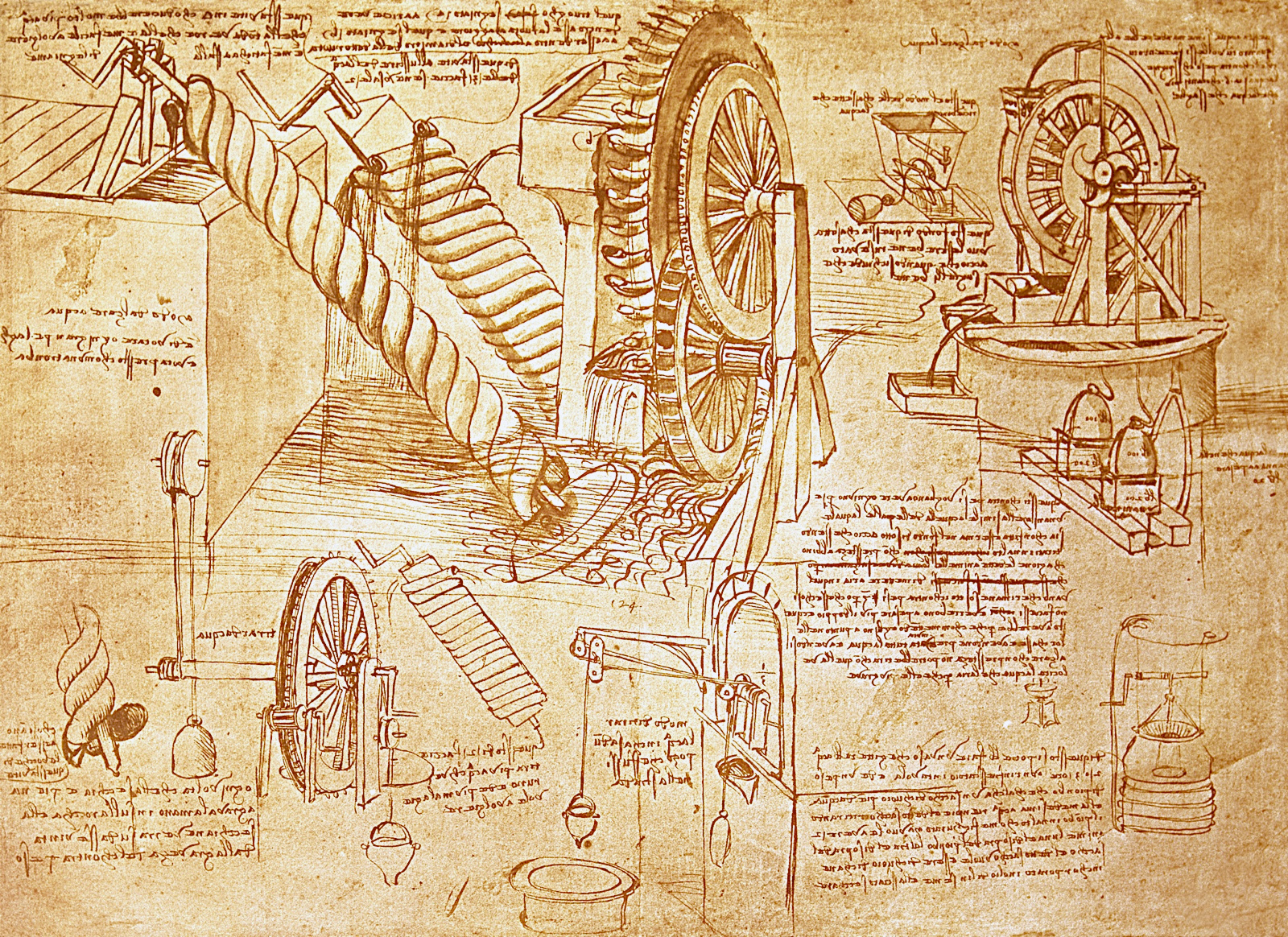
A page from Leonardo da Vinci's "Atlanticus Codex" on waterwheels and Archimedean screws, c. 1478-1519.
Photo is in the public domain via Wikimedia Commons.
An engineering design notebook is a place for you to keep all of your questions, thoughts, discoveries, and work as you go through the design process. This is intended to be a chronological record of your progress and is considered a legal document. That means that your design notebook should be written in ink and nothing should ever be erased! This notebook can be kept digitally or physically.
For more great information, you can check out chapter 21 of the following book, "Introduction to Engineering Design."
Things You MUST Do:
Things You SHOULD Do:
Things You CAN Do:
For more information, you can check out this example of an engineering design notebook description of how it should be kept and how it will be judged for the annual VEX Robotics Competition.
Additionally, here is an article by Prof. Todd R. Kelley at Purdue University about keeping a good engineering notebook and why it matters.
Keep all of your thoughts in one place
Easy to share with group members
Legal proof of invention and/or discovery for patents
Source of great information for writing reports
 The design of this page was adapted in part from Research: By Course, Subject, or Topic, by University of Arizona Libraries, © 2020 The Arizona Board of Regents on behalf of The University of Arizona, licensed under a Creative Commons Attribution 4.0 International License.
The design of this page was adapted in part from Research: By Course, Subject, or Topic, by University of Arizona Libraries, © 2020 The Arizona Board of Regents on behalf of The University of Arizona, licensed under a Creative Commons Attribution 4.0 International License.
